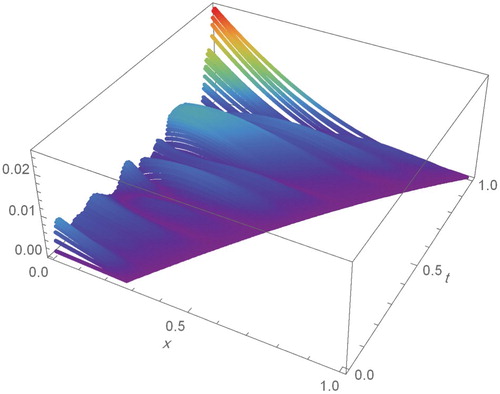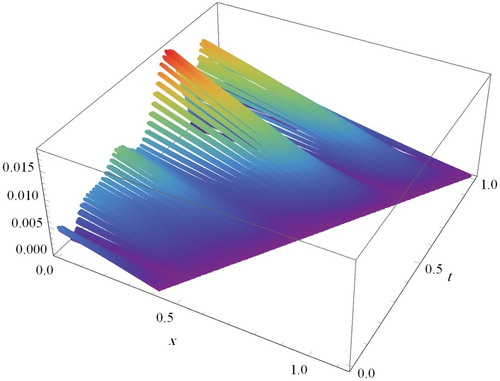Figures & data
Table 1. RMS and CPU time(s) for 
 in Example 6.1.
in Example 6.1.
Table 2. RMS for 
 in Example 6.2.
in Example 6.2.
Table
Figure 3. Graphs of exact and regularized data functions for using new discrete mollification method with
, N = 50 (left panel) and
, N = 200 (right panel) for Example 6.1

Figure 4. Graphs of exact and regularized data functions for using new discrete mollification with
, N = 50 (left panel), and with
, N = 200 (right panel) for Example 1.
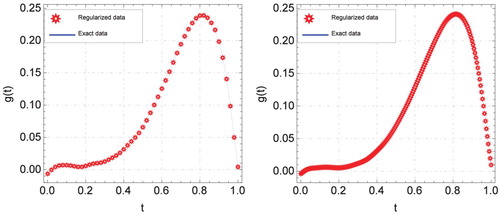
Figure 5. Graphs of noisy data function (left panel) and exact and regularized data functions (right panel) using new discrete mollification with
, N = 128 for Example 2.
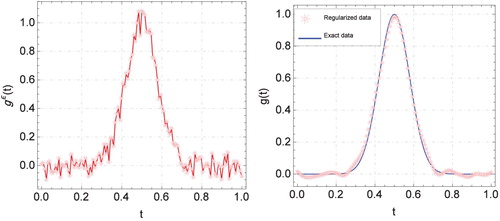
Figure 6. Graphs of exact and computed solutions for with
,
, N = 200 (left panel) and absolute error for
with
,
, N = 200 (right panel) for Example 3.

Figure 7. Graphs of exact and computed solutions for with
,
, N = 200 (left panel) and absolute error for
with
,
, N = 200 (right panel) for Example 3.

Figure 8. Graphs of exact and computed solutions for with
,
, N = 300 (left panel) and absolute error for
with
,
, N = 350 (right panel) for Example 3.

Figure 9. Graphs of exact and computed solutions for with
,
, N = 300 (left panel) and absolute error for
with
,
, N = 350 (right panel) for Example 3.

Table 3. RMS and 
 for Example 3.
for Example 3.
Figure 11. Graphs of exact and computed solutions for with
,
, N = 200 (left panel) and absolute error for
with
,
, N = 200 (right panel) for Example 4.

Figure 12. Graphs of exact and computed solutions for with
,
, N = 200 (left panel) and absolute error for
with
,
, N = 200 (right panel) for Example 4.

Figure 13. Graphs of exact and computed solutions for with
,
, N = 200 (left panel) and absolute error for
with
,
, N = 200 (right panel) for Example 4.

Figure 14. Graphs of exact and computed solutions for with
,
, N = 200 (left panel) and absolute error for
with
,
, N = 200 (right panel) for Example 4.


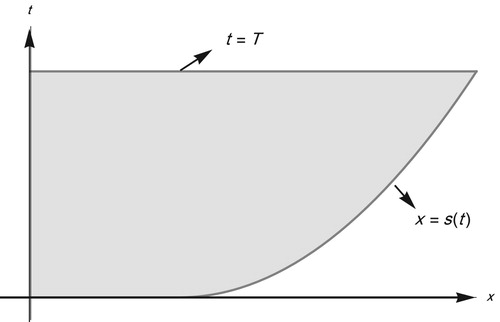
![Figure 2. The unknown UMnn at the (Mn,n)th mesh point calculated in step 3 for n=1,…,N with N = 3 and M0=3, where Mn=[s(tn)/h].](/cms/asset/8107c951-eca6-4eb2-a3f1-8d68671cab9b/gipe_a_1733996_f0002_oc.jpg)
